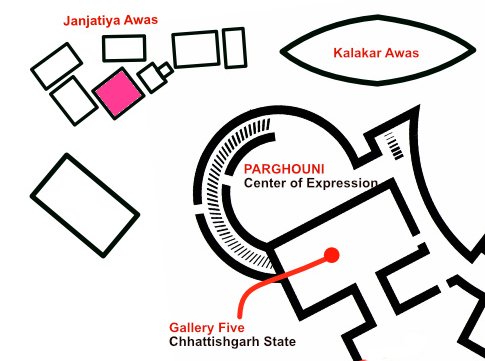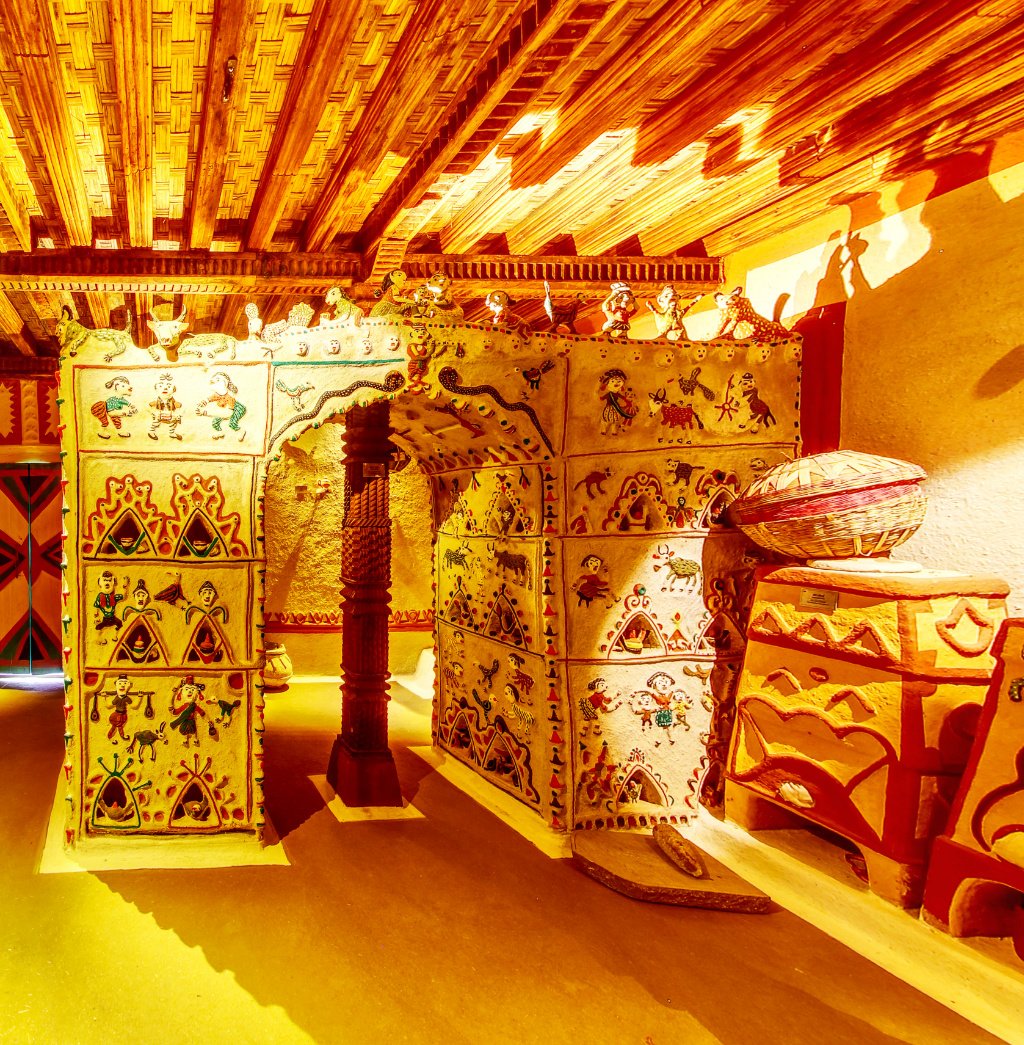House of Gond
Tribal communities have a distinctive practice of constructing their homes using locally available materials, minimizing harm to the environment. For generations, Gond women have adorned the walls and floors of their mud houses with diverse shapes and natural colors, using techniques known as “Naahdora,” “Chinha,” “Dhig lagana,” or “Dhigna.”
The main entrance of a Gond house typically faces east, and on the left side, there’s a sacred cow shed where auspicious occasions are celebrated. Let’s explore the different sections of a Gond house:
- Paita Bangla: This is the meeting place where people gather and sit.
- Parchhi: It’s the half-open verandah adjacent to the courtyard, where tools related to farming and animal husbandry are kept.
- Mudhat Ghar: This is the heart of the house, where the stove burns. Grains, pulses, and oilseeds are stored here for the entire year. It’s also the abode of the house deity.
- Kuria: All other rooms are called Kuria.
The most remarkable feature of a Gond house is the central courtyard, which serves as an open space within the house—a true reflection of Indian traditional architecture.

